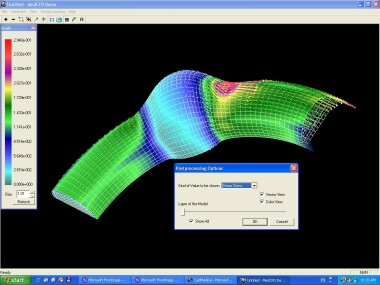The project MedCFD is referred to software for the simulation of blood flow.
Generally our software for blood flow contains three-dimensional Computational Fluid Dynamics (CFD) simulation of flow through blood vessels with wall shear stress computation. We include flexible blood vessel walls, fluid-structure interaction, viscoelastic behavior of deformable walls etc.


For our clients we can offer the specific CAD/CFD modules for simulation of blood flow in:
1. The ascending aorta
2. The descending aorta
3. The brachiocephalic trunk
4. The left common carotid artery
5. The right common carotid artery
6. The subclavian artery
7. The left coronary artery
8. The right coronary artery
Each of these software modules provides automation, eliminates user-dependent mistakes, drastically reduces time for making the computer model, so that there is no need for user to know the details about pre-processing procedure for the CFD computer analysis. The solution results are written in formats adequate for use in other Windows applications.
For the moment we can send you the interactive program MedCFD for the simulation blood flow through an aneurysm with rigid walls. Using the MedCFD you are able to determine and evaluate the effects of flow characteristics which cannot be obtained by other methods. It was found that the blood flow through an aneurysm is very complex, with reattachement and separation points. Such saddle points can be found by the MedCFD program.
The program MedCFD provides automatic generation of a realistic geometric model of an aneurysm. Using this user-friendly CFD program to simulate blood flow within aneurysm helps in predicting the aneurysm growth and the danger of rupture.
Users of this program could be vascular surgeons, physician and biomedical engineers. In addition, the program is made in a way that anyone users without adequate pre-knowledge on computational methods and modeling can easily understand and use the program.
Download MedCFD Demo v1.0b Now!
* This software was developed with support of Ministry for Science, Technology and Development, Project TR233
